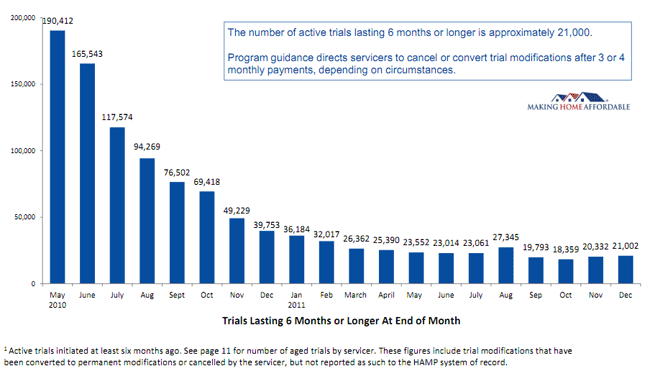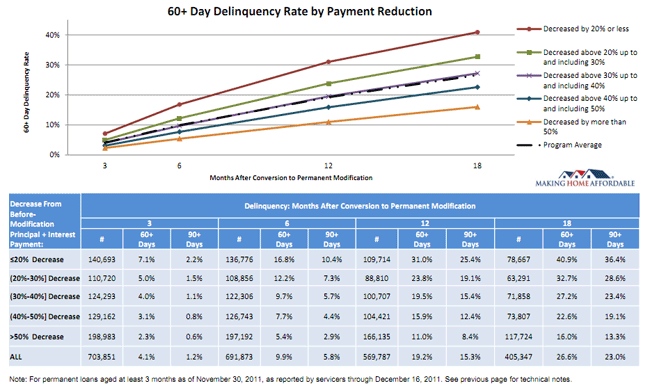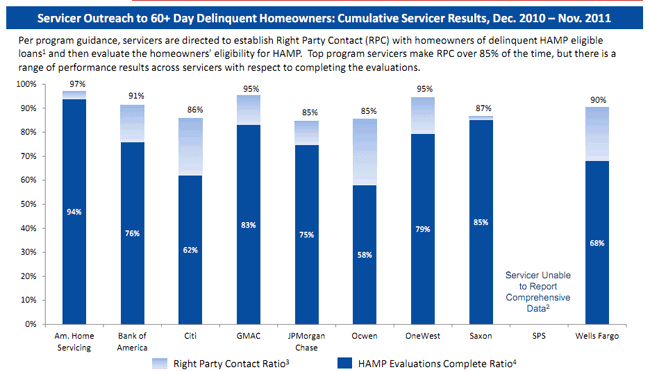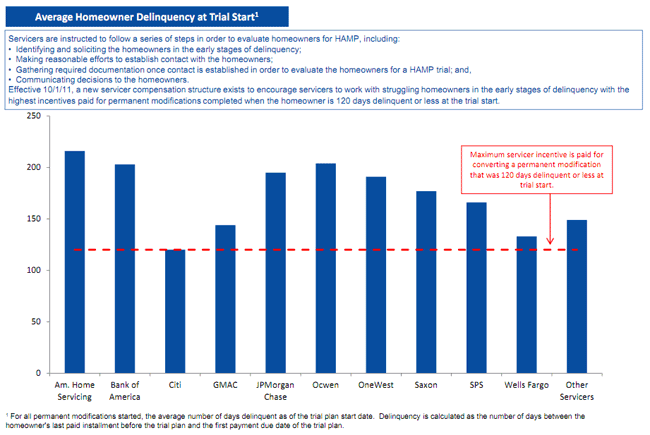Blog

January Housing Scorecard Released by HUD, Treasury
ThernDepartments of Housing and Urban Development (HUD) and Treasury issued thernadministration’s January Housing Scorecard on Monday. The report is essentially a summary ofrndata on housing and housing finance released by public and private sources overrnthe previous month and/or quarter. Mostrnof the data such as new and existing home sales, permits and starts, mortgagernoriginations, and various house price evaluations have been previously coveredrnby MND. </p
The scorecard incorporates by referencernthe monthly report of the Making Home Affordable Program (MHA) through the endrnof December. This includes informationrnon the universe of MHA programs including the Home Affordable ModificationrnProgram (HAMP), HOPE Now, and Second Lien Modifications and other initiatives. </p
Since thernHAMP program began in April 2009 1,774,595 homeowners have entered into trialrnloan modifications, 20,074 since the November HAMP report. About half of these homeowners, 933,327, haverncompleted the trials and converted to permanent modifications; 23,374rnconversions took place during the current report period. Just over three-quarters of a million of the permanentrnmodifications are still active.</p
While thernHAMP program dates to April 2009, it underwent substantial revisions to itsrnpolicies and procedures in June 2010, and many of the measures of itsrnperformance are benchmarked at that time. rnEight-four percent of homeowners who entered a trial modification afterrnthat date have received a permanent modification with an average trial periodrnof 3.5 months compared to 43 percent who entered a trial prior to the changes. As of December, 21,002 of the active trialsrnhad been underway for six months or more; in May 2010, the month before thernchanges took place, 190,000 trials were six months old or more. In December every servicer except Ocwen wasrnabove an 80 percent conversion rate.</p
 </p
</p
HAMPrnmodifications with the largest reduction in mortgage payments continue torndemonstrate the lowest redefault rates. Atrn18 months after modification all loans have a 90+ day default rate of 23rnpercent. However, loans with a 20rnpercent or smaller reduction in loan payment are defaulting at the rate of 36.4rnpercent while loans with a 50 percent payment decrease or greater have arndefault rate of 13.3 percent. </p
 </p
</p
The HomernAffordable Foreclosure Alternatives program offers incentives to homeowners whornwish to exit home ownership through a short sale or deed-in-lieu ofrnforeclosure. Thus far 43,368 homeownersrnhave been accepted into the program and 27,665 transactions have beenrncompleted, the vast majority through a short sale. More than half of the completed transactionsrn(18,350) were on loans owned by private investors; 7,711 were portfolio loansrnand 1,604 were GSE loans.</p
There hasrnbeen an emphasis in some quarters on reducing the principal balance ofrndistressed loans since the last HAMP report. rnSome members of Congress have asked for justification from the GSEs asrnto why they were not participating in principal reductions and the TreasuryrnDepartment recently urged them to do so as well while tripling the incentivesrnit is paying to other investors to reduce principal. The HAMP Principal Reduction Alternativern(PRA) has started trial modifications for 63,203 home owners and permanentrnmodifications for 42,753 of which 40,374 are still active. The median principal amount reduced in thesernmodifications is $67,196, a median of 31.1 percent of the principal balance.</p
Each monthrnHAMP reports on selected servicer performance metrics. Servicersrnare expected to make Right Party Contact (RPC) with eligible homeowners andrnthen evaluate their eligibility for HAMP. HAMP evaluated servicer outreach to 60 daysrndelinquent homeowners over the previous 12 months (November 2010-December 2011)rnand found most services have made RPC at least 85 percent of the time; howeverrnthere is a wide range of performance results in terms of completed the evaluations.rn </p
 </p
</p
Servicersrnare also expected to identify and solicit homeowners in early stages ofrndelinquency and, effective October 1, 2011, a higher compensation structure wasrnput into effect to reward servicers who complete evaluations and placernhomeowners in a trial modification within 120 days of first delinquency. The table below shows the status of majorrnservicers relative to their eligibility for maximum incentives. </p

All Content Copyright © 2003 – 2009 Brown House Media, Inc. All Rights Reserved.nReproduction in any form without permission of MortgageNewsDaily.com is prohibited.
Latest Articles
By John Gittelsohn August 24, 2020, 4:00 AM PDT Some of the largest real estate investors are walking away from Read More...
Late-Stage Delinquencies are SurgingAug 21 2020, 11:59AM Like the report from Black Knight earlier today, the second quarter National Delinquency Survey from the Read More...
Published by the Federal Reserve Bank of San FranciscoIt was recently published by the Federal Reserve Bank of San Francisco, which is about as official as you can Read More...

Comments
Leave a Comment